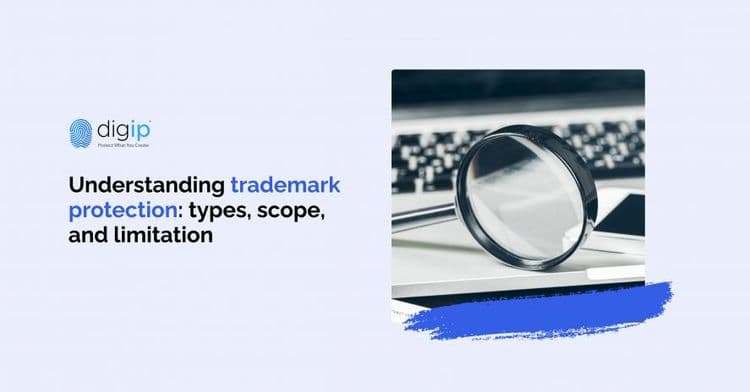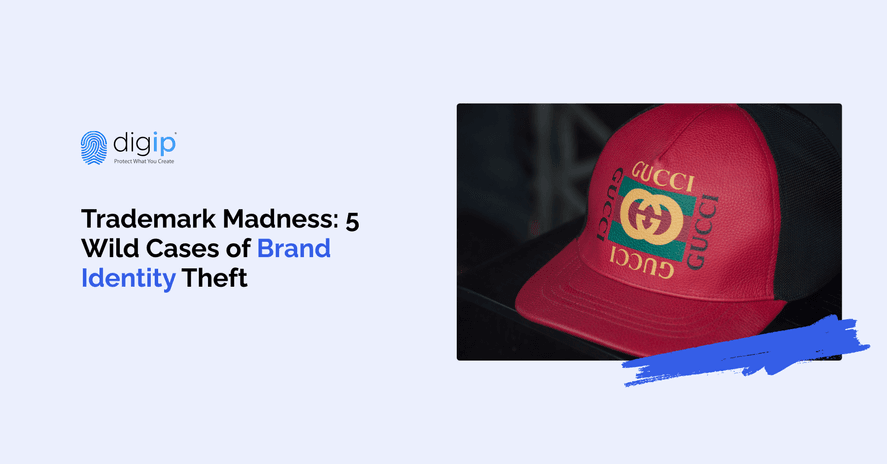
- Trademark
Understanding trademark protection: types, scope, and limitation
For many, protection of a trademark begins and ends with registering a trademark with an official Intellectual Property Office in their jurisdiction. However, is having a trademark ownership certificate enough to protect your brand?
Digip aims to debunk assumptions about trademark protection. In this blog, learn the types of marks protected under trademark law, the scope of protection, and the limitations attached to trademark protection.
Introduction of trademark protection
Protecting your trademarks associated with your brand against unauthorized use by third parties is known as brand and trademark protection.
Once a brand gains popularity and builds customer loyalty, often scammers and copycats use that to their advantage to promote counterfeits or their own brand. For instance, you’d commonly find replicas of famous luxury brands, including Gucci, YSL, and Dior.
Safeguarding your trademarks from infringing by third parties is critical to protect a brand's reputation and loss of revenues.
What types of marks can be protected under trademark law
Trademarks cover distinctive symbols, logos, names, slogans, smells, designs, and sounds that could be used to identify a particular brand or business.
Did you know that the company owns the trademarks for the distinct orange color used in Reese’s peanut butter candy packaging?
The importance for brands and businesses
According to Brand Finance, Google’s trademark is the most valuable on the planet, with an estimated worth of $ 44 billion.
Protecting your trademark assets is a necessity in contemporary times where counterfeiting and cyber-scams are a reality. Only a business that vigilantly monitors and safeguards its trademarks can continue to benefit from its trademark assets.
Scope of protection of trademarks
The scope of protection of a trademark can be influenced by various factors, including the goods and services for which it is registered and the use of the trademark.
Exclusive rights to use
A registered trademark provides the owner with an exclusive right to use the mark in connection with the services or goods in which the application is filed. Subsequently, the owner has the right to prevent other competitors in the same class from using a confusingly similar mark.
Take legal action for infringement cases
To maintain the full scope of protection for a trademark, a mark owner must take legal action against infringers. This includes trademark monitoring to ensure competitors and copycats are not infringing on your mark and then enforcing rights against anyone using trademarks without authorization.
By taking prompt action, a mark owner can preserve a trademark's distinctiveness and protect against depreciation in value.
Limitations of trademark protection
In case of a commercial non-use of a trademark for an extended period, a mark might be considered abandoned, and the trademark protection might be lost.
It is important to understand that generic trademarks such as ‘computer’ and ‘elevator’ cannot be protected. Similarly, descriptive marks that merely represent the goods or services being offered cannot claim trademark protection. A good example would be ‘fresh apples’ and ‘iced coffee.’
Additionally, your trademark only protects your brand in the class of category it was filed in. An automotive company and a food restaurant can both in parallel have the same mark without infringing on each other.
Geographics limitations
Trademarks are only protected in the geographic area where your brand is based and registered. EU trademark protection can be achieved by registering your mark with the European Union Intellectual Property Organization (EUIPO) but won’t be helpful to enforce your rights in the United States (USPTO).
Ultimately, registering a trademark is an essential first step. However, it's not enough to simply register your trademark and leave it at that. It's crucial to consistently and prominently use your trademark in commerce to maintain and strengthen its protection. To add, a trademark should always be used the way it is trademarked; otherwise, it can weaken or even result in the loss of the trademark’s protection.
Along with using your trademark consistently, monitoring for potential infringements is also essential. By keeping an eye on how others use similar trademarks, you can identify potential violations and take action to protect your brand.
Overall, it's important to remember that a trademark is a valuable asset for your brand, and it's worth investing the time and effort to protect it. By registering your trademark, using it consistently, and monitoring for potential infringements, you can safeguard your brand and its reputation in the marketplace.
With Digip’s Trademark Pro Package, you can monitor and regularly receive report when another brand files a similar mark to your registered one. This allows you to take legal action to protect your IP rights.
- Trademark



